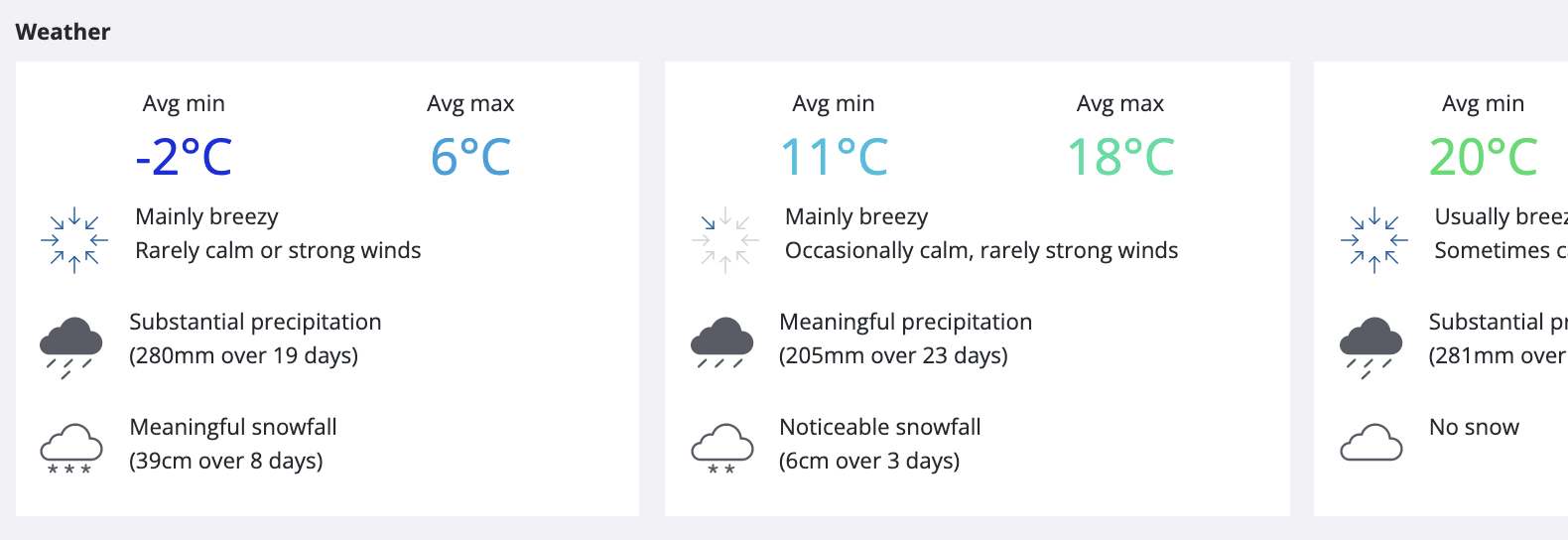In any PreDesign study created with satellite weather, you'll find seasonal rain and snowfall information included as follows:

How to use this information
You can use this information to get a feel for what some typical conditions looked like in this climate. Some suggestions:
- Seasons with more than 150mm of rainfall are considered to have meaningful, substantial or abundant precipitation. From this point, design solutions such as rainwater collection will probably be useful during these seasons. Note that precipitation includes snow.
- There are roughly 91 days in each season. Although we don't show details of exactly when it rains, the number of precipitation days gives a feel for how frequently it rains. Lots of days of rain implies more spread out, with rain potentially likely to be more disruptive to outdoor activities. There needs to be at least 1mm (1/32 in) of rain for a day to count as having rain.
- If your location has snow, then this can give you a sense of what this typical year was like. If your location saw meaningful snow, then it fell in enough volume to have some sort of impact on daily life during that season. Where snow is noticeable or low, it's less likely to be disruptive.
- For a day to be considered snowy, there needs to be at least 1cm (approx ½ in) of snow. 1mm of precipitation falling as snow equates to roughly 7mm of snow.
The Outside Space feature also offers some guidance on how often rain cover might be useful in this climate when considered alongside the other typical weather factors.
How data is calculated
The first important note about the rain and snow data in PreDesign is the weather information taken from the same "typical year" period as all the other weather information. This means you are looking at the rain and snow events that were recorded when the "typical" weather events happened. This means it could diverge quite a lot from historical averages or personal experience.